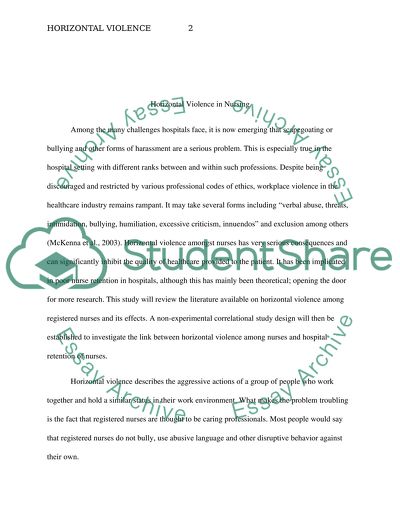Cite this document
(“Horizontal Violence in Nursing Essay Example | Topics and Well Written Essays - 3250 words”, n.d.)
Retrieved from https://studentshare.org/nursing/1392998-horizontal-violence-in-nursing
Retrieved from https://studentshare.org/nursing/1392998-horizontal-violence-in-nursing
(Horizontal Violence in Nursing Essay Example | Topics and Well Written Essays - 3250 Words)
https://studentshare.org/nursing/1392998-horizontal-violence-in-nursing.
https://studentshare.org/nursing/1392998-horizontal-violence-in-nursing.
“Horizontal Violence in Nursing Essay Example | Topics and Well Written Essays - 3250 Words”, n.d. https://studentshare.org/nursing/1392998-horizontal-violence-in-nursing.


